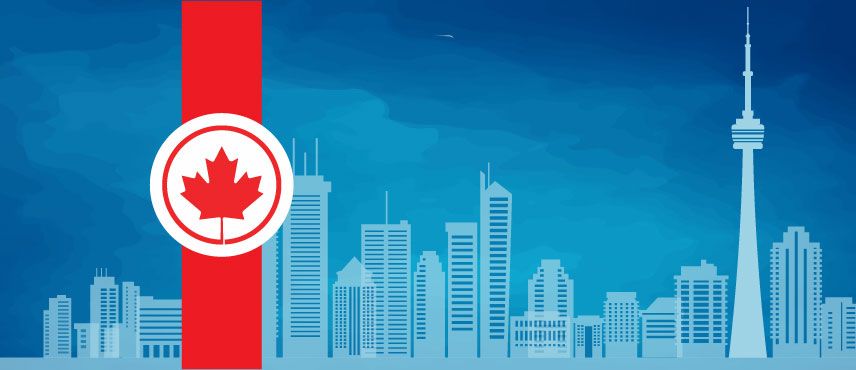2020 was a historic year in Canadian immigration. Not only did Canada surprise with its ambitious immigration plans, but also made a significant impact on Canada’s overall immigration system by repeatedly breaking its own records throughout the year.
Having welcomed over 341,000 immigrants in 2019, Canada’s immigration plan was well on track in the early beginning of 2020. But with the rise of the global COVID-19 pandemic, Canada, like the rest of the world, saw an unprecedented halt in immigration.
However, Canada was quick to ‘adapt and impress’ with a brand new plan in action. It was the first country to bounce back with post-crisis economic recovery plans on immediate effect.
In this article, we are going to cover everything you need to know about:
- The Canadian Immigration Pattern in 2020
- Express Entry Draws
- PNP Intakes, and
- Canada’s Future Immigration Plans
An Overview on Canadian Immigration in 2020
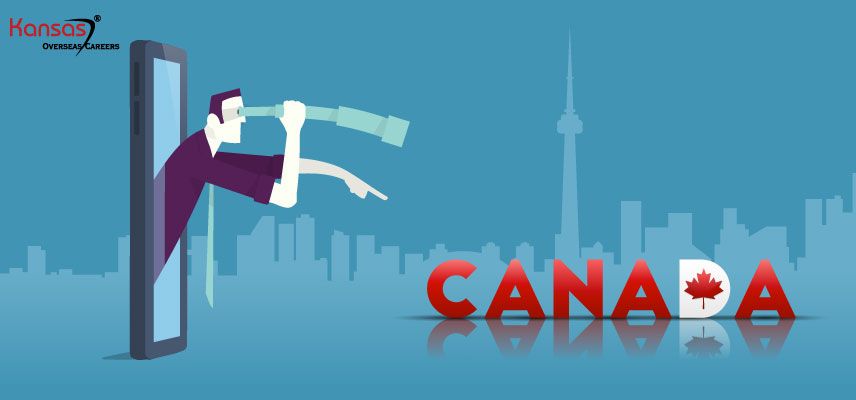
Canada as a country has a highly-progressive and competitive economy. The World Economic League Table ranks Canada as the world's 10th-largest economy based on its GDP in 2019, with immigration being a key contributor to the nation’s GDP.
In 2020, not only did Canada accept 195,800 new immigrants but also introduced the ‘highest immigration intake plan’ in its history.
In early March, 2020, Canada announced its 2021-2023 Immigration Levels Plan aiming to welcome 401,000 immigrants in 2021, 411,000 in 2022, and 421,000 in 2023.
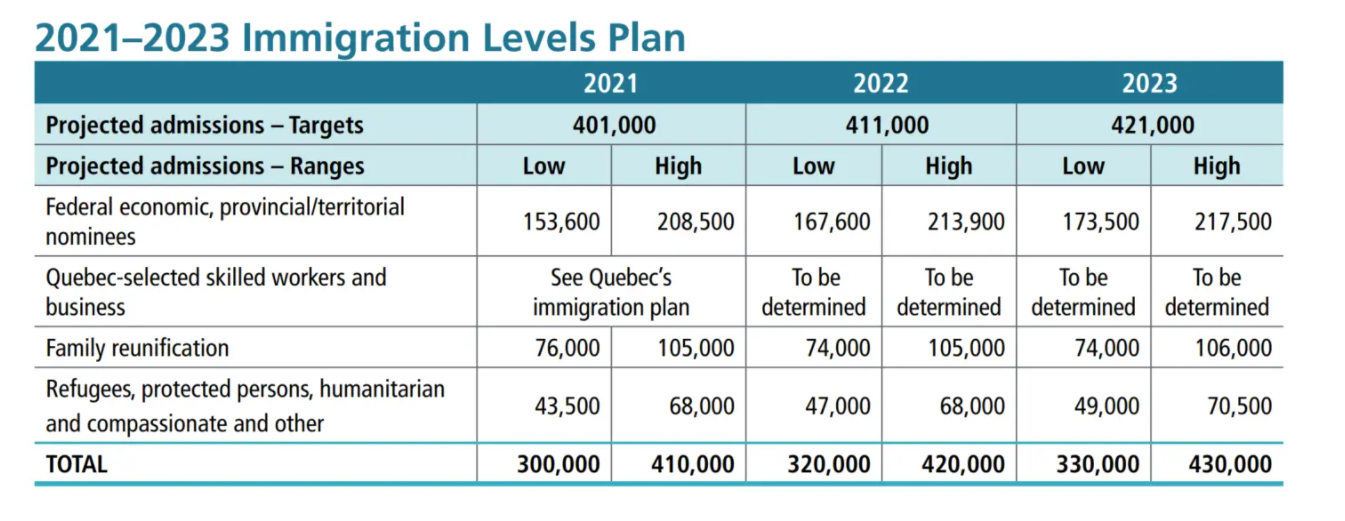
About 60 percent of immigrants were to be welcomed through the Express Entry and the Provincial Nominee Program.
Now, let's take a look at how Canada managed to accomplish its record-breaking strides in immigration with its Express Entry and Provincial Nominee Programs in 2020.
Canada Express Entry - What is it?
The Express Entry Canada, as the name suggests, is one of the fastest immigration routes for skilled foreign nationals to immigrate to Canada. This program can offer candidates with a PR in less than 8-12 months.
Canada’s Express Entry is a doorway to 3 Canada’s three Federal High-Skilled immigration programs:
- Federal Skilled Worker Program (FSWP) - For experienced foreign nationals,
- Federal Skilled Trades Program (FSTP) - For traders and businessmen,
- Canadian Experience Class (CEC) - For those with Canadian work experience, and some of its Provincial Nominee Programs (PNP)
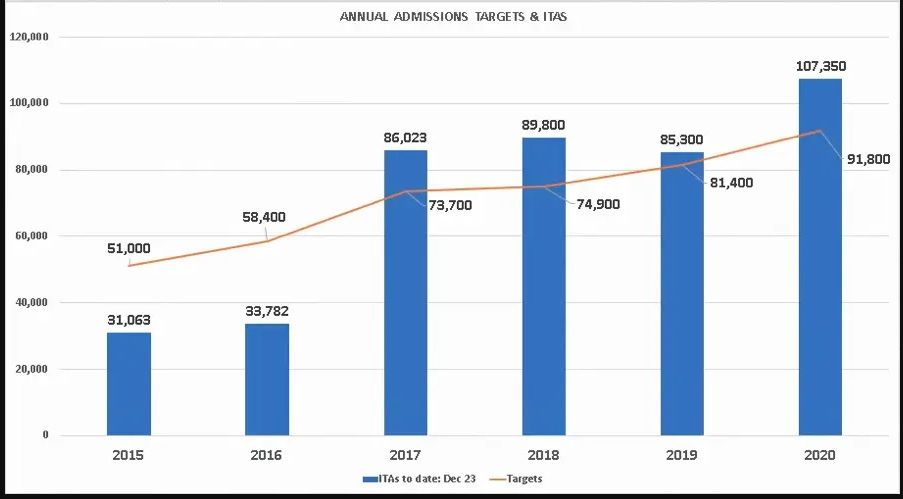
How does Express Entry work?
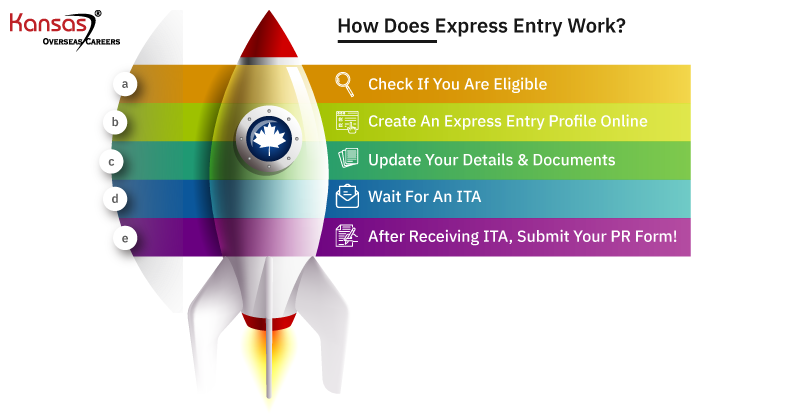
- You must first score a minimum of 67 points to apply for Express Entry
- You then create an Express Entry Profile
- Submit your ECA Report, language test results and other documents
- If you have a high CRS score that is same or above as the cut-off for the latest Express Draw, you receive an ITA
- An ITA is an Invitation to Apply for Permanent Residence issued by the Canadian Government to candidates with a good CRS score
- You adhere to the invite and submit your PR application within 60 days
Note: You can also apply for one of the PNP programs and receive an additional 600 points on your CRS score if the province nominates you. This is a guaranteed way of receiving an ITA.
Canada Express Entry Draw Highlights in 2020
Key highlights of a record-breaking year in the Express Entry Program
- The year 2020 began with Express Entry draw sizes consistently increasing
- The 19 February first quarter draw saw IRCC issue invitations to 4,500 candidates
- In 2020, Canada held 37 invitation rounds, issuing 107,350 ITAs to Express Entry applicants
|
Program |
Total Draws |
Total Invitations |
|
Canadian Experience Class |
10 |
34215 |
|
Federal Skilled Trades |
1 |
250 |
|
Federal Skilled Worker |
16 |
68100 |
|
EE-Provincial Nominee Class |
7 |
3393 |
|
EE-Provincial Nominee Program |
3 |
1392 |
|
Grand Total |
37 |
107350 |
- 72% of applicants with scores between 415 - 478 were eligible for at least one of the Express Entry programs in 2020
- Express Entry broke all records in both the biggest and smallest draws. The smallest draw was a provincial nomination draw held on 15 April 2020 that invited 118 candidates
- 2020 saw a CRS cutoff score of above 470 for most of the program draws (with few exceptions).
- The November 25, 2020 draw issued the highest ITAs of 5,000 with a low CRS cut-off score at 469
- 2020’s last Express Entry draw on December 23 was the fourth draw in a row to issue 5,000 invitations i.e 20,000 invitations well within a one month — breaking all previous records for Express Entry!
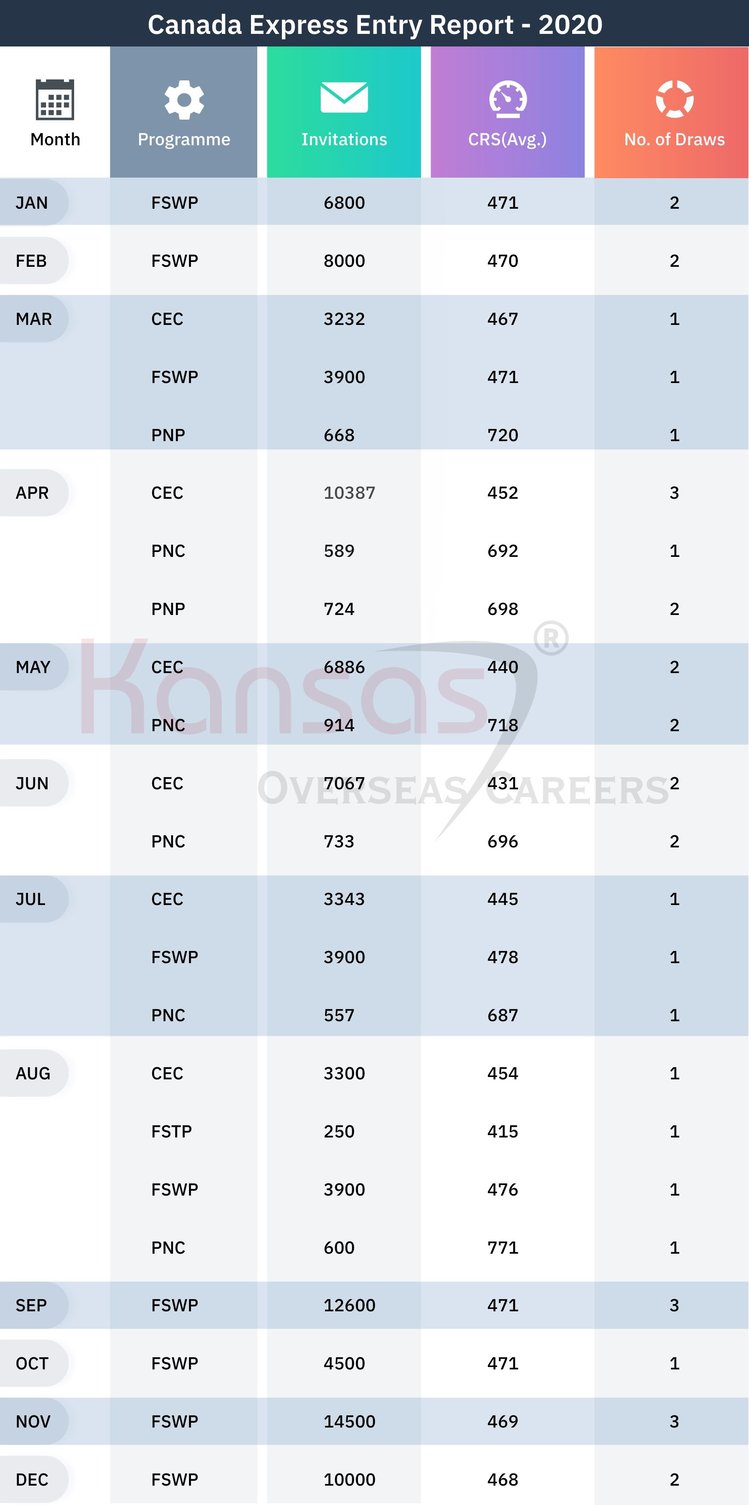
|
Express Entry System - 2020 Year-End Report |
|||
|
Invitations |
Lowest CRS Score |
Draws |
|
|
Jan-20 |
|||
|
FSWP |
6800 |
471 |
2 |
|
Feb-20 |
|||
|
FSWP |
8000 |
470 |
2 |
|
Mar-20 |
|||
|
CEC |
3232 |
467 |
1 |
|
FSWP |
3900 |
471 |
1 |
|
Provincial Nominee Program |
668 |
720 |
1 |
|
Apr-20 |
|||
|
CEC |
10387 |
452 |
3 |
|
Provincial Nominee Class |
589 |
692 |
1 |
|
Provincial Nominee Program |
724 |
698 |
2 |
|
May-20 |
|||
|
CEC |
6886 |
440 |
2 |
|
Provincial Nominee Class |
914 |
718 |
2 |
|
June-20 |
|||
|
CEC |
7067 |
431 |
2 |
|
Provincial Nominee Class |
733 |
696 |
2 |
|
Jul-20 |
|||
|
CEC |
3343 |
445 |
1 |
|
FSWP |
3900 |
478 |
1 |
|
Provincial Nominee Class |
557 |
687 |
1 |
|
Aug-20 |
|||
|
CEC |
3300 |
454 |
1 |
|
FSTP |
250 |
415 |
1 |
|
FSWP |
3900 |
476 |
1 |
|
Provincial Nominee Class |
600 |
771 |
1 |
|
Sep-20 |
|||
|
FSWP |
12600 |
471 |
3 |
|
Oct-20 |
|||
|
FSWP |
4500 |
471 |
1 |
|
Nov-20 |
|||
|
FSWP |
14500 |
469 |
3 |
|
Dec-20 |
|||
|
FSWP |
10000 |
468 |
2 |
Express Entry Result 2020 - Lowest to Highest CRS scores
- The lowest CRS cut-off score for 2020 was 415 for the FSTP program
- The CRS cut-off was 468 on December 23 for an all-program draw, which is the lowest all-program cut-off in Canada’s recent history
- The smallest draw was a PNP only draw on April 15, where just 118 invitations were issued
- Only 250 skilled trades workers were invited this year on 6 August 2020 through the Federal Skilled Trades draw
Program Type Month No. of Invitations CRS Federal Skilled Worker 20-Dec 5000 468 20-Dec 5000 469 20-Nov 5000 472 20-Nov 5000 469 20-Nov 4500 478 20-Oct 4500 471 20-Feb 4500 470 20-Sep 4200 475 20-Sep 4200 472 20-Sep 4200 471 20-Aug 3900 476 20-Jul 3900 478 20-Mar 3900 471 Canadian Experience Class 20-Apr 3782 455 20-Jun 3559 437 20-May 3515 440 20-Jun 3508 431 Federal Skilled Worker 20-Feb 3500 472 20-Jan 3400 473 20-Jan 3400 471 Canadian Experience Class 20-May 3371 447 20-Jul 3343 445 20-Apr 3311 452 20-Aug 3300 454 20-Apr 3294 464 20-Mar 3232 467 Provincial Nominee Program 20-Mar 668 720 Provincial Nominee Program 20-Apr 606 698 EE-Provincial Nominee Class 20-Aug 600 771 20-Apr 589 692 20-Jul 557 687 20-May 529 718 20-Jun 392 696 20-May 385 757 20-Jun 341 743 Federal Skilled Trade 20-Aug 250 415 Provincial Nominee Program 20-Apr 118 808 Total ITAs 107350
What to expect in Express Entry 2021?
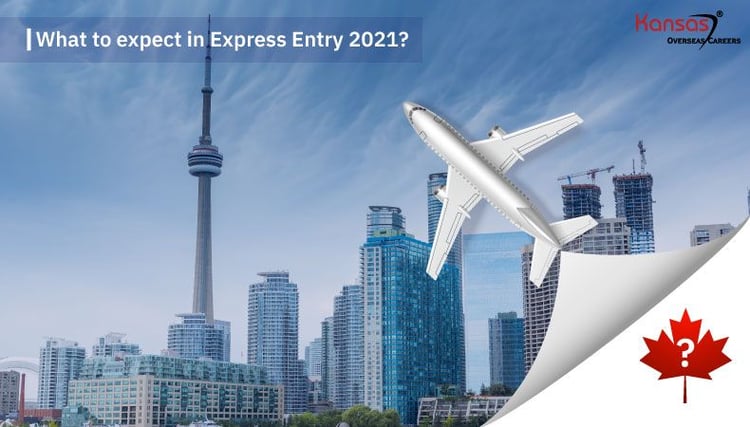
Canada is hoping to allocate 108,500 candidates to come through Express Entry out of a total of 401,000 new immigrants next year. This target is expected to go up to 113,750 in the year 2023.
Canada will have to approve about 8,946 candidates per month to reach the target of 401,000 immigrants in 2021. For this, they will need to conduct two draws each month.
IRCC will have to issue more than 4,500 invitations per draw in 2021 to account for candidates who may no longer want to migrate to Canada.
Provincial Nominee Programs
Unlike the Express Entry which is applicable across Canada, Provincial Nominee Program (PNPs) are specific to provinces that are in need of skilled workers who want to settle and contribute to a specific province or territory in Canada.
Most provinces and territories have at least one PNP stream under the Federal Express Entry system, which is Canada’s main immigration pathway.
PNP streams tied with Express Entry (known as ‘Enhanced’ PNPs), let provinces choose Express Entry candidates and invite them to apply for a provincial nomination. The candidates get 600 additional CRS points upon a PNP nomination.
PNP streams not tied with Express Entry (known as ‘Base’ PNPs), also nominate candidates for permanent residence.
How do Provincial Nominations work?
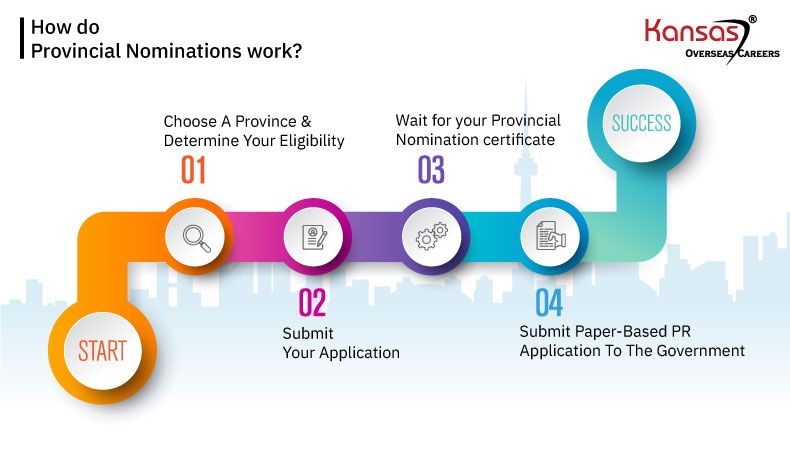
Canadian provinces and territories nominate individuals and families based on criteria set by them that meet their labour market needs and economic development goals.
To be nominated you must meet the specific requirements of the provinces and territories while also showing a genuine interest in settling there. Here’s how to apply for a PNP program:
- Choose a province and determine your eligibility
- Submit your application
- Wait for your Provincial Nomination certificate
- Submit paper-based PR application to the government
If you were nominated through an Express Entry PNP, you can continue applying online via Express Entry.
Draws & Invitations by Canada's Provincial Nomination Programs in 2020
|
Canada - Monthly PNP Draws and Invitations |
|||
|
Month |
PNP Name |
No. of Draws |
No. of Invitations (NOIs/LAAs) |
|
20-Jan |
Alberta Total |
3 |
501 |
|
BC Total |
4 |
585 |
|
|
Manitoba Total |
9 |
616 |
|
|
NS Total |
0 |
0 |
|
|
Ontario Total |
2 |
1196 |
|
|
PEI Total |
1 |
123 |
|
|
Quebec Total |
1 |
23 |
|
|
Saskatchewan Total |
5 |
318 |
|
|
Grand Total |
25 |
3362 |
|
|
20-Feb |
Alberta Total |
1 |
150 |
|
BC Total |
4 |
511 |
|
|
Manitoba Total |
6 |
460 |
|
|
NS Total |
2 |
28 |
|
|
Ontario Total |
2 |
506 |
|
|
PEI Total |
1 |
153 |
|
|
Quebec Total |
0 |
0 |
|
|
Saskatchewan Total |
4 |
278 |
|
|
Grand Total |
20 |
2086 |
|
|
20-Mar |
Alberta Total |
0 |
0 |
|
BC Total |
4 |
810 |
|
|
Manitoba Total |
6 |
448 |
|
|
NS Total |
0 |
0 |
|
|
Ontario Total |
0 |
0 |
|
|
PEI Total |
1 |
5 |
|
|
Quebec Total |
0 |
0 |
|
|
Saskatchewan Total |
1 |
73 |
|
|
Grand Total |
12 |
1336 |
|
|
20-Apr |
Alberta Total |
3 |
520 |
|
BC Total |
4 |
584 |
|
|
Manitoba Total |
3 |
153 |
|
|
NS Total |
0 |
0 |
|
|
Ontario Total |
3 |
523 |
|
|
PEI Total |
1 |
10 |
|
|
Quebec Total |
0 |
0 |
|
|
Saskatchewan Total |
0 |
0 |
|
|
Grand Total |
14 |
1790 |
|
|
20-May |
Alberta Total |
2 |
339 |
|
BC Total |
4 |
632 |
|
|
Manitoba Total |
3 |
123 |
|
|
NS Total |
0 |
0 |
|
|
Ontario Total |
1 |
703 |
|
|
PEI Total |
2 |
33 |
|
|
Quebec Total |
0 |
0 |
|
|
Saskatchewan Total |
2 |
156 |
|
|
Grand Total |
14 |
1986 |
|
|
20-Jun |
Alberta Total |
1 |
187 |
|
BC Total |
5 |
1005 |
|
|
Manitoba Total |
6 |
305 |
|
|
NS Total |
0 |
0 |
|
|
Ontario Total |
5 |
1624 |
|
|
PEI Total |
3 |
110 |
|
|
Quebec Total |
1 |
7 |
|
|
Saskatchewan Total |
0 |
0 |
|
|
Grand Total |
21 |
3238 |
|
|
20-Jul |
Alberta Total |
0 |
0 |
|
BC Total |
4 |
473 |
|
|
Manitoba Total |
9 |
498 |
|
|
NS Total |
0 |
0 |
|
|
Ontario Total |
1 |
1288 |
|
|
PEI Total |
2 |
195 |
|
|
Quebec Total |
0 |
0 |
|
|
Saskatchewan Total |
2 |
140 |
|
|
Grand Total |
18 |
2594 |
|
|
20-Aug |
Alberta Total |
0 |
0 |
|
BC Total |
4 |
863 |
|
|
Manitoba Total |
6 |
466 |
|
|
NS Total |
0 |
0 |
|
|
Ontario Total |
2 |
724 |
|
|
PEI Total |
2 |
313 |
|
|
Quebec Total |
0 |
0 |
|
|
Saskatchewan Total |
3 |
206 |
|
|
Grand Total |
17 |
2572 |
|
|
20-Sep |
Alberta Total |
0 |
0 |
|
BC Total |
5 |
1426 |
|
|
Manitoba Total |
3 |
212 |
|
|
NS Total |
1 |
5 |
|
|
Ontario Total |
0 |
0 |
|
|
PEI Total |
1 |
345 |
|
|
Quebec Total |
1 |
365 |
|
|
Saskatchewan Total |
4 |
300 |
|
|
Grand Total |
15 |
2653 |
|
|
20-Oct |
Alberta Total |
0 |
0 |
|
BC Total |
4 |
923 |
|
|
Manitoba Total |
6 |
397 |
|
|
NS Total |
0 |
0 |
|
|
Ontario Total |
2 |
793 |
|
|
PEI Total |
1 |
211 |
|
|
Quebec Total |
0 |
0 |
|
|
Saskatchewan Total |
3 |
217 |
|
|
Grand Total |
16 |
2541 |
|
|
20-Nov |
Alberta Total |
0 |
0 |
|
BC Total |
4 |
870 |
|
|
Manitoba Total |
6 |
401 |
|
|
NS Total |
0 |
0 |
|
|
Ontario Total |
3 |
1169 |
|
|
PEI Total |
1 |
254 |
|
|
Quebec Total |
0 |
0 |
|
|
Saskatchewan Total |
4 |
294 |
|
|
Grand Total |
18 |
2988 |
|
|
20-Dec |
Alberta Total |
0 |
0 |
|
BC Total |
4 |
646 |
|
|
Manitoba Total |
3 |
415 |
|
|
NS Total |
2 |
36 |
|
|
Ontario Total |
2 |
687 |
|
|
PEI Total |
1 |
195 |
|
|
Quebec Total |
1 |
233 |
|
|
Saskatchewan Total |
4 |
290 |
|
|
Grand Total |
17 |
2502 |
|
|
Year-2020 |
Total |
207 |
29648 |
2020 PNP Highlights
- Highest invites in PNP: The Ontario PNP under the Human Capital Priorities Stream (Express Entry) in July, conducted a Tech Draw inviting 1288 candidates, the highest invitations for a single draw in 2020
- Lowest score invited: The December Draw of the Nova Scotia PNP under the International Graduate Entrepreneur Stream invited 2 candidates with the lowest CRS score of only 42!
- PNP that held the highest draws in 2020: British Columbia PNP conducted 59 draws issuing a total of 9958 invitations in 2020
- PNPs that added new immigration streams in 2020:
- Alberta PNP: The International Graduate Entrepreneur Immigration Stream and the Foreign Graduate Start-up Visa Stream
- Newfoundland and Labrador PNP: Priority Skills Newfoundland and Labrador
- Yukon PNP: The Yukon Community Pilot
|
CANADA PNP YEARLY RESULTS - 2020 |
|||
|
PNP |
Total No. of Draws |
Total No. of Invitations |
Lowest CRS Scores |
|
Alberta |
10 |
1697 |
300 |
|
British Columbia |
59 |
9958 |
75 |
|
Manitoba |
23 |
4682 |
375 |
|
Nova Scotia |
3 |
69 |
42 |
|
Ontario |
23 |
9213 |
132 |
|
Prince Edward Island |
17 |
1947 |
85 |
|
Quebec |
4 |
628 |
0 |
|
Saskatchewan |
18 |
2272 |
109 |
|
Total |
157 |
30466 |
|
2020 PNP Highlights (By Stream)
Alberta
2020 immigration intake by Alberta PNP: 1697 invitations
The Alberta Express Entry Stream conducted 59 draws inviting candidates with CRS scores as low as 300.
Alberta also introduced two new immigration streams for international graduates:
- The International Graduate Entrepreneur Immigration Stream and
- The Foreign Graduate Start-up Visa Stream
British Columbia
2020 immigration intake by British Columbia PNP: 9958 invitations
The province conducted 59 draws via its popular streams: Express Entry British Columbia, Skills Immigration, Entrepreneur stream and Tech Pilot having invited candidates with CRS scores as low as 75.
The province of British Columbia invited over 9,000 candidates to apply for a provincial nomination in 2020.
Saskatchewan
2020 immigration intake by Saskatchewan PNP: 2272 invitations
The province conducted 18 draws via its 2 streams: Saskatchewan Express Entry stream and the Saskatchewan Occupation In-Demand stream having invited candidates with CRS scores as low as 109.
The province issued some 8,000 invitations to apply for a provincial nomination through both streams.
Manitoba
2020 immigration intake by Manitoba PNP: 4682 invitations
The province conducted 23 draws via its 2 streams: Skilled Workers in Manitoba, Skilled Workers Overseas and International Education Stream.
Nova Scotia
2020 immigration intake by Nova Scotia PNP: 69 invitations
The province conducted 3 draws having invited candidates with CRS scores as low as 42.
Nova Scotia also processed applications through the Atlantic Immigration Program (AIP)
By the end of 2020, Nova Scotia had approved 3,517 candidates (skilled in essential services or healthcare workers residing in Canada), thus exceeding the annual target planned for the year.
Of the record number of 3,517 applications for newcomers in 2020, 1,617 are from the Atlantic Immigration Program and 1,900 from the Nova Scotia Provincial Nominee Program.
Ontario
2020 immigration intake by Ontario PNP: 9213 invitations
The province conducted 23 draws under the Express Entry French-Speaking Skilled Worker stream, Express Entry Human Capital Priorities stream, Express Entry Skilled Trades Stream and Entrepreneur Stream.
The lowest CRS score invited by Ontario in 2020 was 300
Quebec
Quebec issued invitations through the Quebec Skilled Worker Program following the Quebec Expression of Interest system, known as Arrima.
Quebec introduced new immigration pilot programs between 2020 and January, 2021:
- Permanent immigration pilot program for orderlies - for professions like nurse aide, orderly and patient service associates listed in the code 3413 of the NOC
- Quebec immigration pilot program for workers in artificial intelligence, information technology, and visual effects
- Quebec immigration pilot program for food processing workers
- Quebec Immigrant Investor Program - for Canada’s businesses immigrants with a high net worth, 1900 applications a year
- Quebec Entrepreneur Program - for experienced businessmen who want to start a new business in Quebec, or buy out an existing business
What to expect in Provincial Nominee Program 2021?
One of the fastest-growing immigration pathways of Canada, the PNP program is ever-expanding with regular improvisations and relaxations in their eligibility criteria along with additions of new streams and significantly increasing their intakes every year.
Between 2020 and 2022, more than 2 Lakh immigrants are expected to receive Permanent Residence through Canada’s Provincial Nominee Program.
Canada plans to welcome more than 80,000 new permanent residents through PNPs in 2021 with Quebec alone aiming to welcome up to 47,500 newcomers.
New Immigration Programs Launched in 2020
1. Two streams under the Alberta Immigrant Nominee Program (AINP)
Alberta has introduced two new immigration pathways focused towards international graduates who want to begin businesses in Alberta thus creating more jobs and adding to the province’s economy.
- The International Graduate Entrepreneur Immigration Stream - for recent international student graduates from Alberta post-secondaries, effective October 26, 2020
- Foreign Graduate Start-up Visa Stream - for international student graduates from top U.S. universities and colleges, effective January, 2021
The International Graduate Entrepreneur Immigration Stream will follow an Expression of Interest system, which is now open to submissions. More information on the Foreign Graduate Start-up Visa Stream will be available later this year.
2. Priority Skills Newfoundland and Labrador
It is a new immigration program for skilled workers which in effect from January 2, 2021.
It will be applicable for
- skilled workers with at least a year’s experience in an in-demand occupation
- post graduates of Memorial University with a Masters or Doctorate degree in either Technology, Health Care, Aquaculture, and Agriculture
The program follows an Expression of Interest (EOI) system that follows an invitation to apply.
Eligibility criteria
- Candidates must have a high ranking Expression of Interest (EOI)
- Interest from local employers
- Language capabilities of CLB 5 or above
- Must be aged 21 or older
- Must be interested to permanently settle in the province
What to expect?
The Program aims to admit 2,500 new permanent residents annually by 2022.
3. The Yukon Community Pilot (YCP)
The Yukon Community Pilot (YCP) is a 3-year Pilot program launched in July 2020.
The YCP gives you a 2-year location-restricted work permit for those awaiting for a Permanent Residence Status through the Yukon Nominee Program (YNP).
How does it help?
There is a wait time of around 8-12 months between getting your PR through the YNP after you are nominated by the province. The YCP helps you get a work permit which you can use to live and work in Yukon during the waiting period.
The 2 year ‘open’ work permit lets you work for upto 3 different employers in Yukon within the 6 participating communities.
The six participating communities are:
- Whitehorse
- Watson Lake
- Dawson City
- Haines Junction
- Carmacks
- Carcross
You don't need an LMIA to work in Yukon.
Eligibility Criteria
- Nomination letter from the Yukon Government
- Signed letter of support from the government of Yukon
- Must have 2-3 job offers from the same participating community in Yukon
- Job must add up to at least 30 work per week
- Job must be a non-seasonal job (paid employment throughout the year)
- The wage must not exceed or meet minimum wage
- Previous experience in the job offered
- Meet the general requirements for a work permit
- English Language requirements
- Must intend to permanently stay in Yukon
Limitations
- Only 50 job openings a year
- Must have 2-3 job offers from the ‘same’ community which are not from different communities of the 6 in Yukon, which is quite difficult
4. New Agri Food Immigration Pilot Program
It is a Pilot program for Permanent Residence (PR) program for those experienced in food and agriculture. The program will run under May 2023
Eligibility Criteria
- Canadian work experience of at least 1 year in the agri-food industry
- Non-seasonal agricultural work experience in last 3 years
- have an eligible job offer
- Settlement funds
- Language proficiency
- Canadian High School Diploma or equivalent education
- Canadian temporary resident status (if applying from Canada)
Note: The program will only accept 2750 applications every year (until May 2023)
|
Eligible occupation |
Yearly applications accepted |
|
Farm supervisor or specialized livestock worker (NOC B 8252) |
50 |
|
Industrial butcher (NOC C 9462) or retail butcher (NOC B 6331) |
1470 |
|
Food processing labourer (NOC D 9617) |
730 |
|
General farm worker (NOC C 8431) |
200 |
|
Harvesting labourer (NOC D 8611) |
300 |
5. Municipal Nominee Program (MNP)
Launched in the 5 provinces of Canada, the Municipal Nominee Program (MNP) is a regional economic immigration program for permanent residency. The provinces include:
- British Columbia
- Alberta
- Saskatchewan
- Manitoba
- Ontario
A minimum of 5,000 vacancies will be available within this program, annually.
Eligibility Criteria
Applicants with a job offer would be prioritized. However, those without a job offer will also be accepted under the MNP program as long as they demonstrate ‘ties to the community’
- Post secondary education in the participating municipality
- Post graduate work experience in the municipality
A community-driven program focused to get skilled workers into the northern and rural parts of Canada to settle there permanently.
The 11 communities under the RNIP program are:
- North Bay, ON
- Sudbury, ON
- Timmins, ON
- Sault Ste. Marie, ON
- Thunder Bay, ON
- Brandon, MB
- Altona/Rhineland, MB
- Moose Jaw, SK
- Claresholm, AB
- Vernon, BC
- West Kootenay (Trail, Castlegar, Rossland, Nelson), BC
Eligibility Criteria
You must
- meet both the IRCC eligibility requirements and the requirements of the community
- have an job with an employer from a participating community
- have a community recommendation
- a post secondary education or post graduate work experience of a year (1500 hours) from a participating community
- intend to settle permanently in the community
- have a proof of Settlement funds
7. Quebec’s permanent immigration pilot program
For workers in the artificial intelligence, information technologies, and visual effects
This pilot program is expected to launch in January, 2021. The two main Streams under the PR pilot program are
- The Artificial Intelligence Stream
- The Information Technologies & Visual Effects Stream
The program is expected to have French speaking and non French speaking streams having an annual intake quota of 550, not including accompanying family members.
Who is it for?
Those seeking to become permanent residents and are skilled in
- artificial intelligence,
- information technology, and
- visual effects
They must have
- a job or a job offer from a Quebec employer
- French-speaking abilities for French stream applicants
- Valid education and work experience relevant to the field
8. Quebec’s Permanent Immigration Pilot Program
For workers in the Food Processing Sector
To be launched in January, 2021, this permanent residence immigration pilot program is focused at workers currently working in Quebec.
They must
- Be employed in Quebec in the food processing sector
- Basic linguistic abilities in French language
- Have a Quebec equivalent education level
- Have at least 24 months of work experience relevant to the food sector
The program will have an annual intake quota of 550, not including accompanying family members.
What to expect in Canada Immigration in 2021?
Canada’s 2021-2023 Immigration Levels Plans are the biggest plans ever made in its history. The following are the number of immigrants it's aiming to accommodate over the next three years:
- 2021: 401,000 immigrants
- 2022: 411,000 immigrants
- 2023: 421,000 immigrants
The federal government of Canada also announced the plan to welcome over one million new permanent residents from 2020 to 2022.
While Canada's ambitious immigration targets sound great to aspiring candidates around the world, it is important to note how the pandemic has contributed to a significant amount of disruptions to the immigrant plan.
Due to travel restrictions put in force to curb the spread of the virus, the physical movement of people was put to halt and the target for 2020 could not be achieved.
However, the emergence of vaccinations in Canada means that there will be changes made to travel restrictions. Canada began the largest vaccination campaign in its history in December and aims to vaccinate all those who want COVID-19 inoculation by September 2021.
Also, the Parents and Grandparents Program (PGP) lottery for the 2020 intake will occur in early 2021, intaking 10,000 applicants for 2020, and 30,000 applicants for 2021.
The four consecutive invites of 5000 each in 2020 also shows Canada’s strong willingness to reach their immigrant targets despite the pandemic. We can expect similar moves from Canada in 2021 as well.
Let's consider this scenario for instance. If Canada is to invite 401,000 immigrants in 2021, Canada will invite at least 2000 invites per draw, conducting 2 to 3 draws every month - something to really look forward to!
We can also expect new immigration programs to be introduced as it was done in 2020! This means more pathways to immigrate to Canada and larger intakes.
How can Kansas help?
Getting a visa can take years if your documentation has errors or you are misinformed about the visa process. Hence, it is advisable to approach a reliable visa consultant to save your much valued time and effort.
At Kansas Overseas, we have specialized experience in fast-tracking Permanent Residency Visas, Work Visas, Study Visas, Temporary visas, and Dependent Visas by guiding you through the entire process with ease.
Your visa process will include personalized services such as:
- Profile Evaluation: Professional guidance based on an in-depth assessment of the client profile to determine chances of visa success.
- Documents & Review: Detailed, error-free documentation based on the visa type drafted to meet specific formats.
- Dedicated Case Officer: A dedicated consultant to assist clients throughout the process.
- Visa Filing: Kansas ensures that the visa applications meet all the standard requirements of concerned immigration authorities and governing bodies.
- Test Preparations: Complimentary online courses are offered to help aspirants improve their Language Proficiency for important exams like IELTS, French, TOEFL, and PTE.
- Visa & Interview: Guidance is provided for aspirants attending visa interviews along with verified documents.
- Post-Landing Service: Kansas helps clients settle down in the new country with a comfortable stay after they have received their visas.
Additional services offered to job-seekers:
- Resume Writing: Dedicated team of resume experts to craft the best resumes that meet prerequisites of immigration authorities and potential employers. This greatly improves their chances of selection.
- Profile Marketing: Kansas is well-known for creating the best-in-class portfolios that boost applicant profiles in job-portals. And yes, this is a complimentary service!
Additional services For students looking for a study visa:
- Admission Guidance: Comparisons between the best programs, colleges, and countries to study in, including arranged mentorship from existing students.
- Writing Services: Admission Essays, Student CV, Statement of purpose (SOP), Letter of recommendations (LOR), and other important services offered by a dedicated team.
- Scholarships & Financial Aid: Offer help to find the best Scholarships programs, Education loans, Study abroad loans, and also offer help in sourcing paid-Internships.
You can expect a one-stop solution for all your visa needs from profile evaluation, documentation, application drafting to post-visa services with Kansas.
With a high success-rate, years of experience and a resourceful team of consultants, we can provide you with a one-stop solution for all your visa needs. Served 20K+ customers and over 3K+ active cases.

